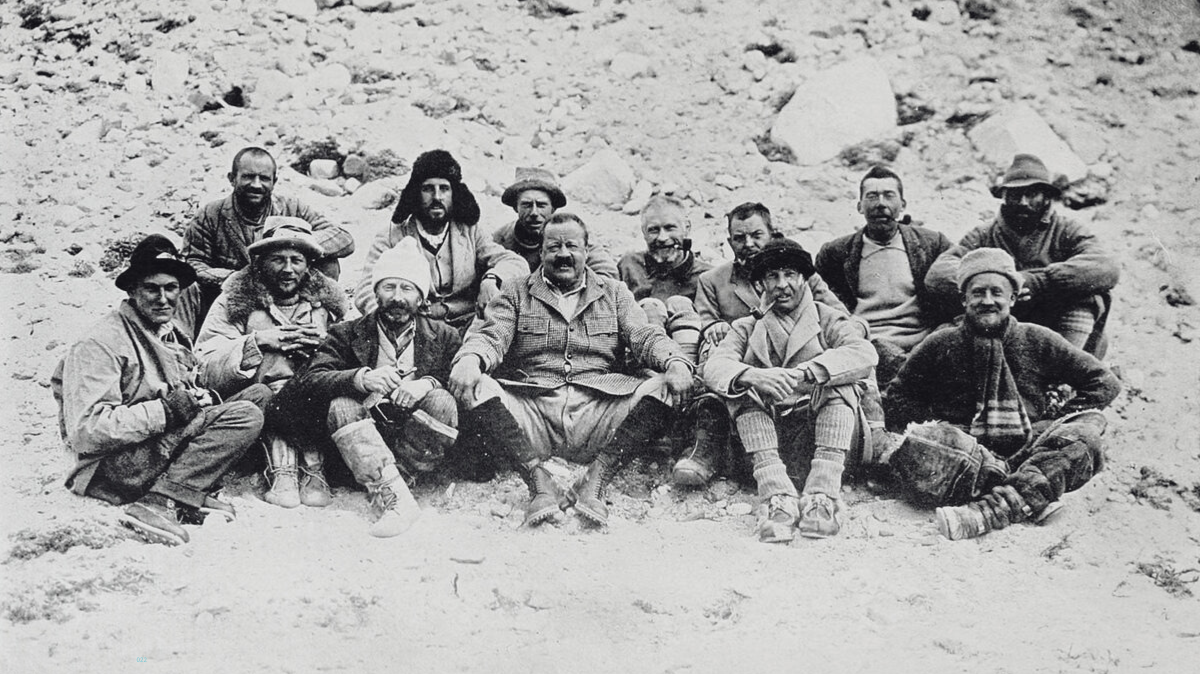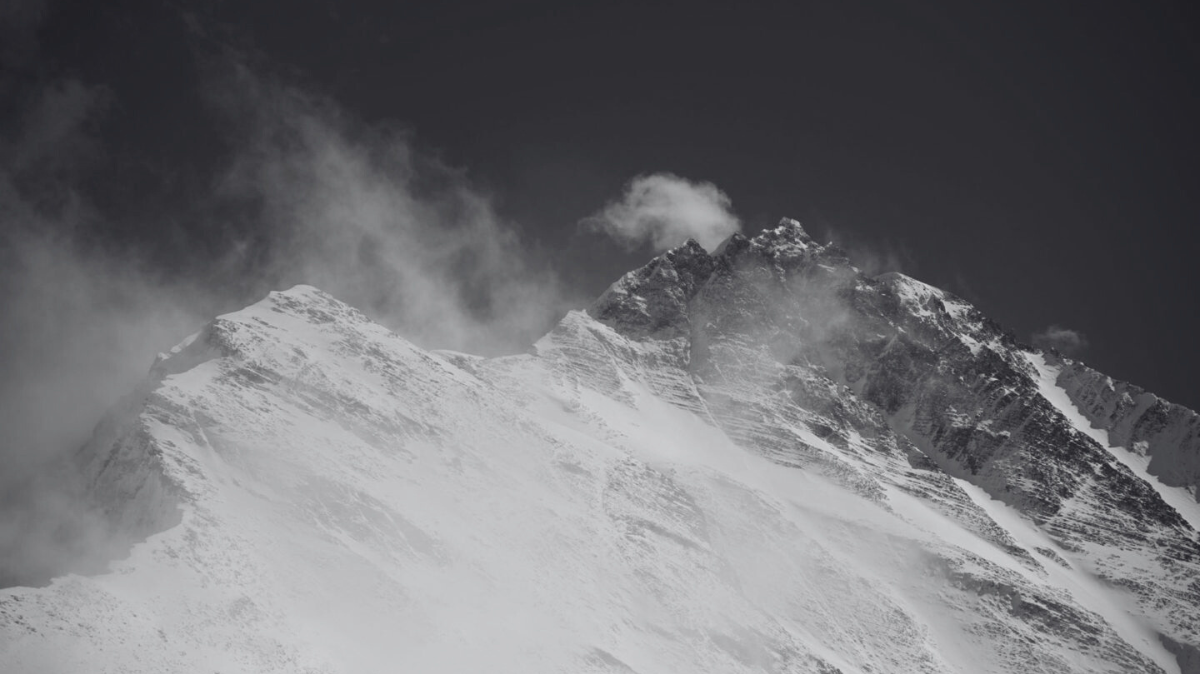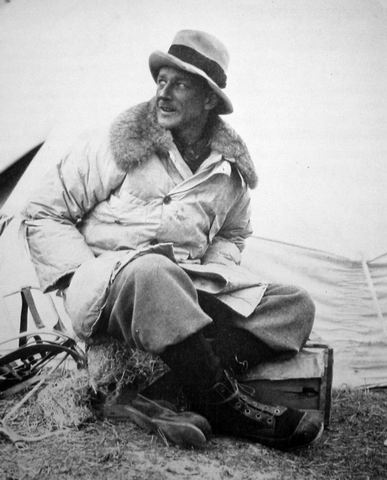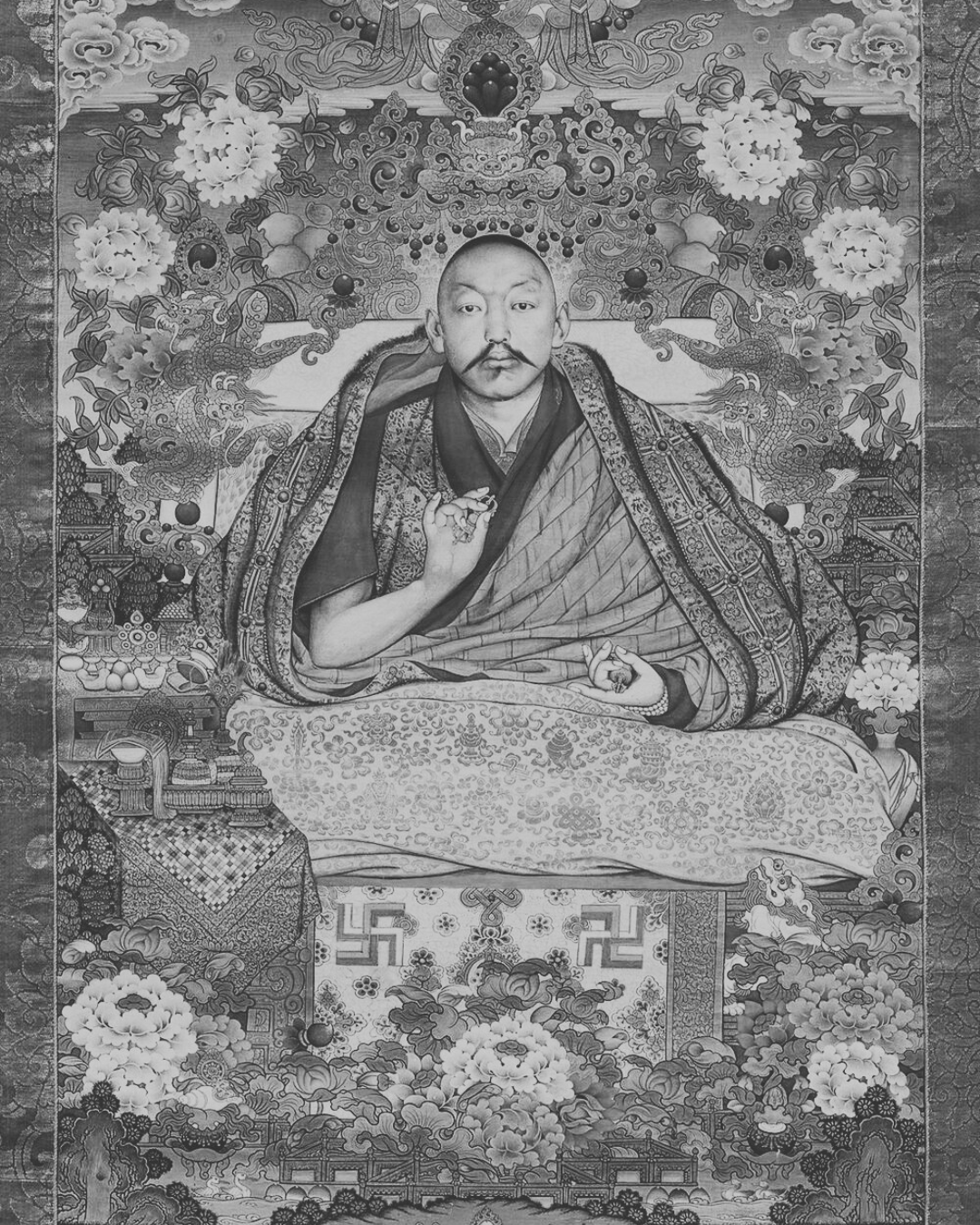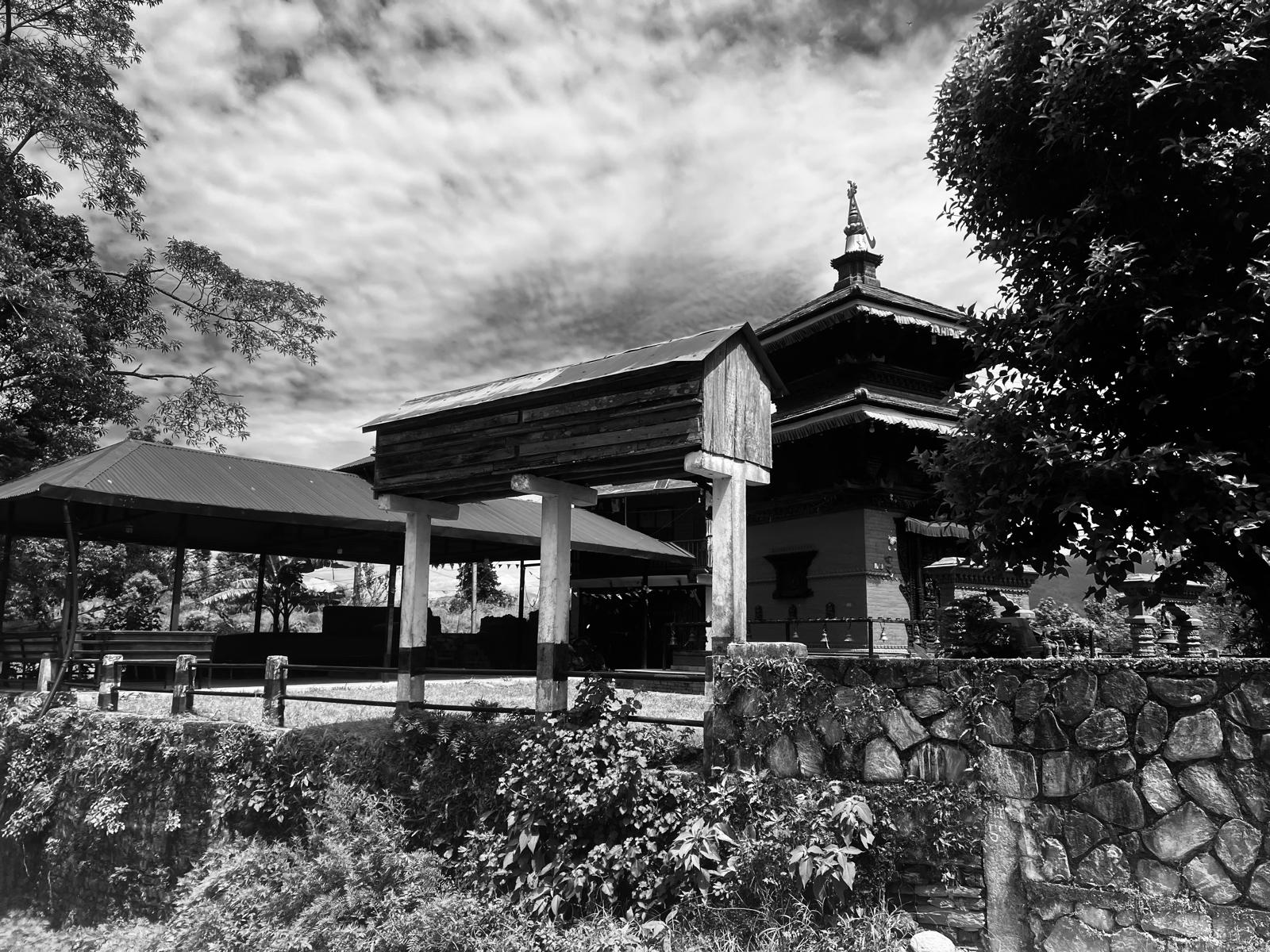NOWHERE-NOW HERE, HECTOR CASTELLS TRAVEL JOURNAL – THE NEPALESE DIARIES III
EXPLOSIONS IN THE SKY—THE EYES OF THE DALAI
Now Here, Lhasa, Tibet, 1922
“He was a man who radiated a sort of positive goodness, a true man of God, and it was impossible to conceive of his having an evil thought. He told us that great harm would come if we killed any of the animals or birds, which wandered tamely in the lower reaches of the Rongbuk. Everest, itself, the lama said, was the home of demons, but he did not fear that our activities would disturb them; they were sufficiently powerful to look after themselves. For his part he would intercede with them not to harm us. But I knew he couldn’t: I could see it in his eyes” (John Morris, British mountaineer of the 2nd Expedition to Everest.)
—Excerpt of John Morris’s Journal about the 13th Dalai Lama. (As quoted in Wade’s Davis “Into the Silence.”)
John Morris (1895-1980) was the most versatile orphan of the Second British Expedition to Mount Everest, and the only member of the mountaineering crew genuinely touched by the grace and vision of the 13th Dalai Lama.
On April 29th of 1922, the leading members of the climbing party had visited the spiritual leader of Tibet to ask for his blessing in their mission, but only Morris took his words to the T.
A prestigious anthropologist, photojournalist, and future professor of Literature and Zen master, Morris was the only member of the climbing party fluent in Nepalese and Tibetan. A Western man trapped in an Eastern mind, he had famously refused to assume the privileges of a British officer fighting in the legendary Gurkha regiment —the Nepalese fearless Army that had eradicated the artillery of English and Indian failed invasions by just using their lethal knives, the Khukhuris. The English were so impressed with their toughness that instead of fighting them, they had the brilliant idea of signing them up, a key movement for their bloody successful invasion of India.
In 1922, after their encounter with the 13th Dalai Lama, Morris intensified his work as a photographer and became the shooter of the iconic portraits that were about to turn the top mountaineer of the expedition into one of the greatest British martyrs of the 20th century, George “Baby Face” Mallory.
Nowhere: Not far away from Heaven: 1922
During his last but one summer on Earth, George Mallory became the hottest poster boy in the UK thanks to Morris’s portraits and to his decisive acrobatics above 8000 metres: he had survived an avalanche that had claimed the lives of seven of his nine Nepali porters.
It happened shortly after the leaders of the climbing party had landed in Lhasa to ask for the blessing of the Dalai Lama, downstairs from Mallory’s future graveyard, on the North Col, the base camp to Mt. Everest —discovered a year prior by his fellow colleague Sam Wollaston.
As Wade Davis chronicles in Into the Silence (2013), the seven deaths were the result of Mallory’s hasty and suicidal effort to crown the summit after finding out that two other fellow mountaineers, George Finch and Geoffrey Bruce, had reached a higher altitude than him after he had deserted them on the way up.
HIMALAYADRENALINE
As it turned out, after the ever so often impatient Mallory had left them behind, Finch and Bruce lost their track and got caught in a blizzard that punished them with -40 temperatures. Bruce was haunted by the deadly glance of the Dalai Lama, and his petrified fear at 8000 metres also took hold of his ears and fingers, bruised and darkened in inauspicious rainbows. The pair had to sleep together under a collapsing tent and they were even more petrified by the time they woke up, even though it is unconceivable that they could sleep at all.
Next morning, at 4am, Bruce could barely breathe. His condition was worsening as much as the weather, and Finch knew that there was only one way to keep him alive: supplementary oxygen. He also took a dose himself, and the boost almost sent both men sprinting to the top of the world.
In the blink of an eye, the morbid Bruce turned into the most agile climber zombie ever seen, while Finch couldn’t have been happier with himself: he had just corroborated that oxygen was the answer. The miraculous effect helped them ascend at thunderous speed to the highest altitude ever reached by a man not named George Mallory: 8333 metres, an instant world record.
MOCXYGEN
George Finch (1888-1970) had been the only staunch believer of the potential benefits of bringing oxygen to the summit, and was mocked during months by the rest of the climbing party, either to his face or behind his back.
The geographer and astronomer Arthur Hinks, an alleged man of science, was already taking the piss months before the start of the expedition. He tried to persuade General Bruce, the army leader of the venture, to drop Finch before starting the mission.
“This afternoon we go to see a gas drill. They have contrived a most wonderful apparatus, which will make you die laughing. Pray to see that picture of Finch in his patent climbing outfit with the gas apparatus is taken by the official photographer. I would gladly put a little money on Mallory to go to 25,000 ft without assistance of four cylinders and a mask.”
ANGELS
George Finch had saved the day, his life and Bruce’s. And yet, he rather triggered than prevented the tragedy that the Dalai Lama had tried to avert in words and envisioned with his third eye. The death of the seven brave porters would be the result of the wounded pride of a man.
Finch was alongside Mallory the most talented mountaineer of the climbing crew, and instead of reinvigorate the attempt with a critical breath of life, his feat only served to wound the pride of the latter, who then recklessly walked the seven Nepali to their cruel death and himself to a state of despair that would haunt him until his own end, which would happen in a matter of two years chillingly close to the stretch of snow where his porters laid buried.
The second British attempt to stab the Union Jack on the peak of the world had to be axed in tragic and undesirable fashion in June of 1922.
KILL ALL YOUR DARLINGS
“In writing you must kill all your darlings.”
(William Faulkner)
NOWHERE: A Furious Farm in Mississippi, 1922
On an indifferent morning of 1922, the quoted writer went for a stroll in the outskirts of a town he didn’t necessarily love. He was going around a family farm that had known its splendour until very recently. Instead, the property was now derelict, and the idle offspring of the ruined parents were running around like headless chickens in tattered clothes outside the overgrown garden.
According to the account of an obscure Finnish scholar, it was then when decadence met death metal. As it turned out, while the quoted writer was contemplating the dismaying sight, the deafening buzz of a plague of cicadas left him spinning for an indefinite amount of time.
Upon regaining his senses, he saw the youngest sister escaping from the chase of her brothers. She was crying out as loud as a cicada poisoned by a fungus —at least according to Arvo P, the obscure Finnish.
THE FILTHY SOUND OF FURY
The quoted writer saw the younger sister climbing a rusty fence. The manoeuvre barely bought her a minute. Next thing the fence collapsed, she fell and the writer saw her wet pants and underwear covered in mud and fear.
Somehow, the picture summarised the unfathomable cruelty of existence, and with those filthy knickers in mind, the only thing that the writer needed to do was to zoom in and let his elaborated words flow.
And so he did: fast-forward seven years, and his effort was published and praised as one of the greatest novels of the 20th century in his country: The Sound and the Fury.
“To write a novel is to climb a mountain: if you want to succeed you’d better kill your darlings before the hill becomes the mountain,” the quoted writer would say years later.
He had never climbed a mountain, but he had killed all his darlings and would end up being rewarded with a Nobel Prize.
NOW HERE, LONDON AND TIBET, 1922
“The avalanche had filled the crevasse at its base with snow, even as it had cast the nine men into the void. Crawford and the four surviving Tibetans began to dig. Mallory and Somervell dropped over the edge of the crevasse. One man was quickly recovered, still breathing. The one beside him had been killed by the fall. Mallory traced a rope to a second corpse, but then found a man alive, barely breathing, trapped upside down with snow packed hard around his limbs. He had been carrying four oxygen cylinders on a steel frame, which had to be cut from his body before he could be dragged to the surface.” Wade Davis. “Into the Silence.”
While William the writer was climbing his vertiginous prose, George Mallory became the wettest dream of the Commonwealth for all the wrong reasons.
The news of the avalanche reached the Royal Geographical Society and the Alpine Club in London in a matter of hours. Both fancy houses were the main investors of the Himalayan enterprise, and upon reading the tragic news, the old farts sitting at the executive board started rubbing their hands together and lighting up their cigars: they had just hit the jackpot.
Nowhere and Manywhere: FAKE NEWS CENTRAL
The first marketing offensive in the history of fake news began right there right then: the old farts would go on to persuade the stakeholders of a piece of sheet filled with lies and rumours called The Times to join forces with them. And so they did.
Between the months of April and September of 1922, The Times would publish over fifty articles about the heroic ascent and its tragic ending. Millions of English squalid eyes were stuffing their faces with the printed leftovers of the tragedy like vultures on speed.
To the readers, the Nepalese were presented as unaccountable savages and Mallory as the Riefenstahl-like icon that was about to stab the Union Jack on the peak of the world, a much-needed hero for an Empire that had started showing signs of weakness. His raise to celebrity status was unstoppable and would only get greater after his demise.
Mallory would die two years later without having stabbed anything but his own life; another cruel and unexpected turn of events that would only bring happiness to the tabloid owners, who would go on to publish endless obituaries and stories about the fallen martyr.
EEJIT
English journalism, like any other journalism worldwide, is the result of a genius idea: to combine “page 3” and the obituary section in the same shit of paper, which is exactly what the old farts did with the Everest expedition: to fuel the love for the national hero —if only to double the price of their newspaper upon his death.
Now HERE: Lhasa, Nepal, April 29th, 1922
I still cherish the day George and I met the 13th Dalai Lama. On that 29th of April, he forecasted our imminent deaths with the deadly gleam in his eyes and forgave us for trespassing his prodigious mountain range, where only the TWO D lived: Disaster and Dharma.
The Dalai had never met British people, let alone mountaineers, and he quietly concealed his bewilderment: only enlightened beings could face the murderous nature of the upper mountains. Stab the flag sounded ludicrous: why on Earth would you do that?
Mallory and I met the Dalai only hours before George dropped me off the ridge of an iced canyon in his usual clumsy fashion. It happened only five days before the avalanche, so I should consider myself lucky. I was rescued almost unscathed, but since the Buddha had just announced my death sentence, I was expecting a rather terminal outcome.
I took the fall with as much dignity as I could gather, which was not that much. My waist belt was damaged, and my canvas got ripped and scratched, although not beyond repair. It was infuriating that the ineptness of a man had obliterated the painstaking work of my highly crafted artisans.
George’s lack of coordination and balance was unnerving: he could knock out tents, food, cameras or knapsacks, and his negligent handling of the most basic props and devices would bring the expedition to the brink of collapse.
It was astounding to observe how such a light and flexible carrier, a man who could climb vertical, frozen walls like a Geisha tightrope walker, was so helpless when moving in zero gravity.
If he had only listened to what the Dalai Lama had to say in Lhasa, we would be singing a different tune.
Beyond all that, he was the most handsome man to ever put his hands on me.
EPILOGUE
Before uttering his deadly vision, the Dalai showed genuine interest in my existence and mind-blowing interior design.
I’m not a plastic handbag. I was George’s life. Apologies to Ruth, his widow, and their babies, but I was a very fine knapsack, and I’m proud to have spent more time with the irresistible George Mallory than he did with Ruth and the kids in his final years. We were never disloyal to them, and my outburst about his clumsiness is just my blue coping mechanism to deal with his absence. I can only be grateful for having no feelings, although I did feel for George. How could you not?
I was handmade by the most dexterous artisans of London: tailors, seamstresses and needle workers took extreme care to sew and embroider my inside pockets and zips and buckles, to match my fibres and leather hues, most of my rivets carefully picked to match the colours of iridescence, the same brilliance that laid at the bottom of George’s utter sadness.
My life was handled with care and fineness until George came into the picture with his cold hands and impetuous thumbs. He kept sliding them through my shoulder pads as if they were vulgar rags. The friction was far from erotic, but I was aroused nonetheless, oh my George.
THE LATE SENTENCE
The Dalai Lama lowered his eyelids to say that we were about to die, and he did it with such kindred and loving words that he set me free: on that 29th of April I was blessed by the closest to a God amongst men I was ever to meet, and I became as fearless as George was, therefore we were ready to die together.
It is mind-boggling that I’m still around a hundred years later, isn’t it?
I was George’s last belonging to be found after he vanished: a loyal and firm rucksack exclusively designed in Savile Row for the second and third expedition to Mt. Everest.
George used to call me Leopold, which not coincidentally is the name on the label attached to my glass-case at the British History Museum:
“Rucksack Leopold, one of two, designed and sewn in Savile Row 1922.”


